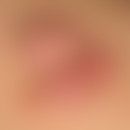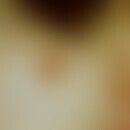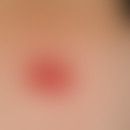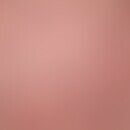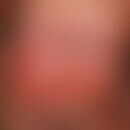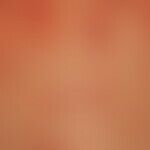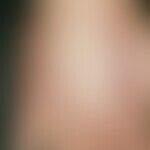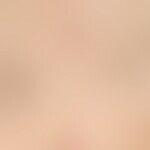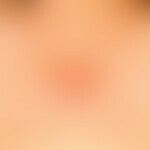Synonym(s)
DefinitionThis section has been translated automatically.
Connective tissue proliferation that forms at different speeds, does not exceed the scar margin and has an irregular surface structure, which tends to regress within a time interval of several months (see Table 1).
ClinicThis section has been translated automatically.
Bulging red, sometimes whitish, asymptomatic but also painful or itchy, firm distensions of the scar area. In contrast to the keloid, the hypertrophic scar does not extend beyond the actual scar area. However, the transitions to the keloid are fluid.
You might also be interested in
Differential diagnosisThis section has been translated automatically.
TherapyThis section has been translated automatically.
The clinical improvement of hypertrophic scars is often difficult and lengthy and generally requires patience on the part of both doctor and patient. Different approaches are possible:
- Pressure bandage: Good results are described with occlusive bandages with silicone gel foils (Epi-Derm foil). Daily wearing for at least 12 hours with a total duration of about 8 weeks. First successes can be expected after 4 weeks.
- Cryosurgery: Open spray procedure with 2 cycles. Repetition at four-week intervals until the scars are completely flattened. The patient must be prepared for the treatment to last several months (in 50% of cases > 1 year). Fractional procedure for large scars.
- Local glucocorticoids: injection with glucocorticoids (e.g. Volon A 10 1:1 with scandicain). Repeat 2-3 times at intervals of 4-6 weeks. Alternatively glucocorticoid ointments, if necessary under occlusion, e.g. 0.05% Clobetasol cream (Dermoxin, R054 ). S.a.u. Keloid.
- Silicone gels: According to observations (no randomised study results!), treatment with silicone gels (e.g. Dermatix® or KELO-COTE®) is sometimes successful. The transparent gel solidifies after a few minutes on the application site and then, like the foil, produces an occlusion with subsequent hydration, which is considered decisive for the success of the therapy). Application: Apply thinly to the scars 2 times/day. When applying to the face, use light protection (e.g. Anthelios).
- Laser systems: In a review article, the PDL (pulsed dye laser) 585 nm (8 studies) was used most frequently, followed by the PDL 595 nm (2 studies). In only 1 study each, the "Fractional Nonablative Laser (1540 nm), the CO2 Laser (10600 nm), the Nd:YAG Laser (532 nm) and the Erbium:YAG Laser (2940 nm) were used. The statements on the success of treatment are to be evaluated with reservation. Apparently, the PDL laser and the Nd:YAG L laser showed the least success. The other lasers described above each achieved a moderate improvement.
TablesThis section has been translated automatically.
Characteristics of hypertrophic scars and keloids (modified according to Ernst and Hundeiker)
Hypertrophic scars |
Keloids |
Restriction to the wound area |
Exceeding the wound area |
No spurs |
Lip-shaped runners that exceed the original scar area |
Mostly spontaneous regression |
Mostly growth tendency |
Treatment only with delayed regression |
Treatment as early as possible |
Mostly rapid response to cryosurgery |
Mostly slow response to cryosurgery |
LiteratureThis section has been translated automatically.
- Ernst K et al (1995) Results of cryosurgery in 394 patients with hypertrophic scars and keloids. Dermatologist 46: 462-466
- Gold MH (1994) A controlled clinical trial of topical silicone gel sheeting in the treatment of hypertrophic scars and keloids. J Am Acad Dermatol 30: 506-507
- Niessen FB et al (2004) Hypertrophic scar formation is associated with an increased number of epidermal Langerhans cells. J Pathol 202: 121-129
- Schmidt A et al (2001) Treating hypertrophic scars for 12 or 24 hours with a self-adhesive hydroactive polyurethane dressing. J Wound Care 10: 149-153
- Vrijman, C et al (2011) Laser and intense pulsed light therapy for the treatment of hypertrophic scars: a systematic review. Br J Dermatol 165:934-942
Incoming links (4)
Camouflage; Clobetasol propionate cream hydrophilic 0.05% (nrf 11.76.); Dermabrasion; Photodynamic therapy;Outgoing links (5)
Clobetasol propionate cream hydrophilic 0.05% (nrf 11.76.); Cryosurgery; Glucocorticosteroids; Keloid (overview); Laser;Disclaimer
Please ask your physician for a reliable diagnosis. This website is only meant as a reference.
